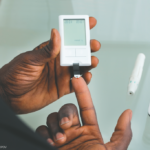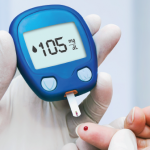 Rheumatoid arthritis (RA) is treatable, and for that, we should be grateful. But wouldn’t it be better if we could prevent it from even happening? Recent data from a study in China demonstrated some interesting results. Could an older type of diabetes medication be the answer we’ve been looking for?
Rheumatoid arthritis (RA) is treatable, and for that, we should be grateful. But wouldn’t it be better if we could prevent it from even happening? Recent data from a study in China demonstrated some interesting results. Could an older type of diabetes medication be the answer we’ve been looking for?
Background
Preclinical studies have suggested that thiazolidinediones (TZDs) have a protective effect against RA, but evidence from population-based studies to support this is scarce. TZDs are agonists of peroxisome proliferator-activated receptor gamma (PPARgamma), which is involved in the regulation of glucose homeostasis and lipid metabolism. PPARgamma also plays an important role in the control of inflammation, immune regulation and inhibition of apoptosis and oxidative stress, all of which have been shown to be associated with the pathogenesis of RA in animal models.1-3
Researchers in China conducted a retrospective, population-based cohort study to assess the association between the use of TZDs and the incidence of RA in patients with type 2 diabetes mellitus (DM).4 The study was published online ahead of print in December 2023.
The primary outcome of the trial was incident cases of RA. This was defined as an RA diagnosis code followed by a second RA diagnosis code or a prescription of a disease-modifying anti-rheumatic drug (DMARD) within one year of the first diagnosis. This approach has been validated by previous research, demonstrating a positive predictive value of 89 to 97% for a true RA diagnosis.5,6
Summary of Research
Zhao et al. used data from an electronic healthcare database in the Yinzhou District, Ningbo City, China, a highly urbanized region. The database integrates longitudinal information from electronic medical records, disease surveillance and management systems (including a diabetes registry and follow-up system), death registry and other healthcare services.
The final cohort included about 72,000 patients with type 2 DM who were either new TZD users or new alpha-glucosidase inhibitor (AGI) users (control group). TZDs included pioglitazone and rosiglitazone. AGIs included acarbose, miglitol and voglibose. TZDs and AGIs are among the top four most commonly prescribed medications for people with type 2 DM in China; only metformin and insulin secretagogues are prescribed more frequently.7
Patients were Chinese, aged 18 years or older with type 2 DM. The majority were around 60 years of age, with equal representation of men and women. Patients were excluded if they initiated combination therapy with TZDs and AGIs, or if they had received a diagnosis of arthritis or spondylitis prior to the index date of the study.



